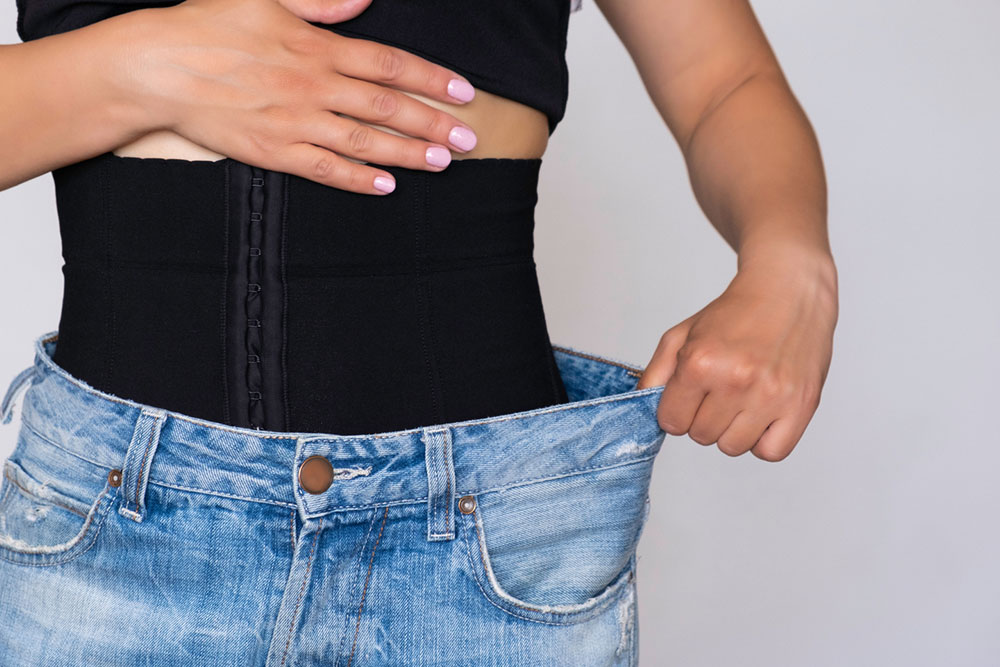6 benefits of wearing shapewear

Ever-evolving beauty standards have led to a constant transformation of clothing and undergarments. As a result, shapewear has become incredibly popular in recent times, not only as a way of ironing out the outfit and making it look seamless but also to enhance confidence and help one feel more comfortable. So, here are some of the benefits of wearing shapewear or compression garments and tips for choosing the right one:
Benefits
1. Smoother silhouette
One of the biggest benefits of shapewear is that it helps achieve a smooth silhouette and finish under the clothes. It eliminates the appearance of any small bumps or visible panty lines, helping outfits seem more polished. It is a simple and inexpensive way of making the clothes fit better to improve the overall look.
2. Improved posture
Most shapewear today is made using elastane. Not only does this have a compressing effect on the body, but it can help improve posture. Modern shapewear encourages one to stand taller, with a straighter back. This can help relieve pain in the spine and the back. Better posture also helps reduce the strain, especially for those who need to sit for extended periods. Post-pregnancy, shapewear can also be used to strengthen the abdominal muscles so the internal organs move back into their normal position naturally.
3. Better support
The body tends to change as one ages. Shapewear can often offer support here, reducing the stress on the spine and back. It can also be beneficial for those dealing with bladder prolapse, as it provides appropriate lift and support to the bladder.
4. Enhanced confidence
The physical effects of shapewear are well-documented. But it can also have a significant impact on self-esteem and confidence, helping one put their best foot forward. In some cases, it may even encourage one to maintain a healthy and active lifestyle.
5. Versatility
Today, shapewear is incredibly versatile. Depending on personal comfort and choice of outfit, one can easily find the right shapewear to go underneath the clothing for a polished look. For instance, one can invest in camisoles, tights, corsets, body shapers, arm shapers, and more.
6. Improved athletic performance
Shapewear technology is also being used to make special compression clothing, which can help improve athletic performance. These pieces are designed to promote blood flow and oxygenation of the muscle tissue. They also help reduce muscle fatigue, lower the risk of muscle soreness, and provide comfort when exercising. For instance, compression shorts reduce chafing and friction and are less likely to ride up when running, squatting, or cycling.
Tips for choosing shapewear
Buy the right size: It is important to know the right size when it comes to buying shapewear. Many people tend to size down, but this may result in an unflattering silhouette under clothes. Shapewear that is too tight is likely to be uncomfortable to wear for long periods. It could also lead to circulation problems, digestive issues, skin irritation, or even fungal infections.
Opt for low-stretch fabric: When buying shapewear, one should look for fabrics with a low stretch. This is because stretchy fabrics are more likely to move with the skin, reducing their supporting effect. Most shapewear today is made of a blend of moisture-wicking polyester or nylon and elastane. Some may also feature a mesh panel for breathability and a smoothing effect.
Consider the outfit: Some shapewear styles work better than others, depending on the outfit of choice. For instance, when wearing a fitted dress, experts suggest opting for shapewear that goes from the upper waist to the thigh, such as shaping shorts or a body suit. Similarly, other outfits may call for different body shapers. So, one can pay attention to necklines and the style of the dress to ensure that the shapewear does not peek out.
It is also important to consider the occasion for which one is dressing. For everyday wear, one should opt for light control shapewear, as it will provide enough support without restricting movement. On the other hand, for special or formal occasions, one can consider investing in firm control shapewear to achieve a smoother silhouette.
Pick a seamless design: When buying shapewear, one should opt for a seamless design to minimize the appearance of any visible lines under clothing, offering a smooth finish.
Pay attention to closure types: Shapewear today comes with different closure mechanisms. Most commonly, they have a hook and eye closure, zippers, or simple pull-up designs. It is important to determine how easy it is to get in and out of them.
Try it on before making a purchase: One should try on the shapewear before making a purchase and check the comfort levels while sitting, walking, squatting, and turning. If the shapewear is the right size, shape, and quality, it will not roll over or dimple while engaging in these activities. One should avoid shapewear with elastic or silicon taping near the legs or the waist, as it can dig into the skin and create visible lines under clothes, defeating the purpose of shapewear.
History of shapewear
Shapewear is not a new concept; it has been around since the ancient Greek and Roman civilizations. During this period, corsets and girdles were made from materials like linen or leather. Over time, the fabric and designs changed in accordance with the evolving trends and requirements. By the 20th century, the use of elastic materials such as latex and rubber made way for more comfortable underwear. Today, the focus of shapewear has shifted away from restrictive undergarments to providing support and enhancement without compromising on comfort. This has led to the development of shapewear that is meant for everyday use.
The purpose of wearing shapewear is to feel comfortable and confident in the chosen outfit. So, the right shapewear should make one feel good and provide adequate support.


